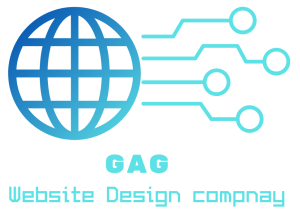In today’s digital landscape, having a strong online presence “SEO-Friendly Design Elements ” is crucial for success. Search Engine Optimization (SEO) plays a pivotal role in driving traffic to your website and increasing its visibility on search engine results pages. Incorporating SEO-friendly design elements into your website can significantly enhance its performance and impact. In this article, we will explore the fundamentals of SEO-friendly design and provide practical insights on how to implement these elements effectively. Whether you’re a seasoned web designer or a business owner looking to improve your online presence, this guide will equip you with the knowledge and tools needed to optimize your website for better search engine rankings and user engagement.
Understanding SEO Basics

Search Engine Optimization (SEO) is the process of optimizing your website to improve its visibility and ranking on search engine results pages (SERPs). To effectively incorporate SEO-friendly design elements into your website, it’s essential to understand the basics of SEO.
What is SEO?
SEO involves various strategies and techniques aimed at enhancing your website’s relevance and authority in the eyes of search engines like Google, Bing, and Yahoo. The ultimate goal of SEO is to increase organic (non-paid) traffic to your website by improving its visibility in search engine results.
Why is SEO Important?
In today’s digital era, the majority of online experiences begin with a search engine. When users search for information, products, or services related to your business, you want your website to appear at the top of the search results. Studies have shown that websites ranking higher on SERPs receive significantly more clicks and traffic than those lower down the list. Therefore, investing in SEO can have a profound impact on your website’s success and visibility.
How Do Search Engines Work?
Search engines use complex algorithms to crawl, index, and rank billions of web pages based on various factors such as relevance, authority, and user experience. Understanding how search engines work can help you tailor your website’s design and content to align with their algorithms and improve your chances of ranking higher in search results.
Key SEO Concepts
- Keywords: These are the words and phrases users type into search engines when looking for information. Incorporating relevant keywords into your website’s content is essential for SEO.
- On-Page Optimization: This involves optimizing individual web pages to improve their ranking and visibility. On-page elements such as title tags, meta descriptions, headers, and content play a crucial role in SEO.
- Off-Page Optimization: In addition to on-page factors, off-page SEO focuses on building your website’s authority and credibility through backlinks from other reputable sites, social media engagement, and online reviews.
- Mobile Optimization: With the increasing use of mobile devices, optimizing your website for mobile users is crucial for SEO success. Mobile-friendly websites rank higher in mobile search results and provide a better user experience.
Importance of SEO-Friendly Design
In today’s competitive online landscape, having a visually appealing website is no longer enough. Your website must also be optimized for search engines to ensure maximum visibility and reach. Let’s explore why SEO-friendly design is crucial for the success of your website:
Enhanced Visibility and Reach
SEO-friendly design ensures that your website is easily discoverable by search engine crawlers, leading to better indexing and ranking on search engine results pages (SERPs). By incorporating SEO best practices into your website’s design, you increase the likelihood of attracting organic traffic from users actively searching for products, services, or information related to your business.
Improved User Experience (UX)
User experience is a critical factor in both SEO and overall website performance. Search engines prioritize websites that provide a seamless and intuitive user experience, including fast loading times, easy navigation, and mobile responsiveness. By optimizing your website’s design for UX, you not only enhance your chances of ranking higher in search results but also provide visitors with a positive browsing experience, leading to higher engagement and conversions.
Competitive Advantage
In industries where competition is fierce, having an SEO-friendly website can give you a significant edge over competitors. Websites that rank higher in search results are perceived as more credible and trustworthy by users, leading to increased traffic, leads, and sales. By investing in SEO-friendly design, you position your website for long-term success and outperform competitors who neglect SEO.
Cost-Effectiveness
Compared to traditional marketing channels such as print ads or TV commercials, SEO offers a highly cost-effective way to attract targeted traffic to your website. Once your website is optimized for search engines, it continues to generate organic traffic and leads without ongoing advertising expenses. This makes SEO-friendly design a sustainable and scalable strategy for businesses of all sizes.
Adaptation to Evolving Algorithms
Search engine algorithms are constantly evolving to deliver more relevant and accurate search results to users. By prioritizing SEO-friendly design, you future-proof your website against algorithm updates and ensure its continued visibility and success in the long run. Regularly updating your website’s design and content to align with current SEO best practices helps you stay ahead of the competition and maintain your competitive edge.
User Experience (UX) and SEO: The Interplay

User experience (UX) and search engine optimization (SEO) are closely intertwined aspects of website design. A seamless user experience not only satisfies visitors but also satisfies search engine algorithms, leading to better rankings and increased visibility. Let’s delve into the interplay between UX and SEO:
Importance of User Experience for SEO
Search engines, like Google, prioritize user satisfaction when ranking websites. Websites that provide a positive user experience tend to rank higher in search results because they meet the needs and expectations of users effectively. Factors such as page load speed, mobile responsiveness, intuitive navigation, and high-quality content contribute to a positive user experience and, consequently, better SEO performance.
Impact of Page Speed on SEO
Page speed is a critical factor in both user experience and SEO. Slow-loading websites frustrate visitors and lead to higher bounce rates, negatively impacting SEO rankings. Search engines prioritize fast-loading websites to ensure a smooth browsing experience for users. By optimizing your website’s performance and reducing page load times, you improve user experience and increase your chances of ranking higher in search results.
Mobile-Friendly Design and SEO
With the increasing use of mobile devices for internet browsing, mobile-friendliness has become a crucial factor in both UX and SEO. Search engines prioritize mobile-friendly websites in their mobile search results, providing a better experience for users accessing the web on smartphones and tablets. By implementing responsive design principles and optimizing your website for mobile devices, you improve user experience and enhance your SEO performance.
Navigational Structure and SEO
An intuitive navigational structure is essential for both user experience and SEO. Clear navigation helps visitors find the information they’re looking for quickly and easily, reducing bounce rates and increasing engagement. Search engines also use website navigation to crawl and index pages effectively. By organizing your website’s content logically and implementing a hierarchical navigation menu, you improve user experience and assist search engines in understanding your website’s structure and relevance.
Content Quality and Relevance
High-quality, relevant content is fundamental to both user experience and SEO. Users expect informative, engaging content that addresses their needs and interests, while search engines prioritize content that provides value and relevance to users’ search queries. By creating valuable content that resonates with your target audience and incorporates relevant keywords, you not only satisfy users but also improve your website’s visibility and ranking in search results.
Key Elements of SEO-Friendly Design
Incorporating SEO-friendly design elements into your website is essential for maximizing its visibility and performance on search engine results pages (SERPs). By focusing on specific aspects of design that align with search engine algorithms, you can improve your website’s ranking and attract more organic traffic. Let’s explore the key elements of SEO-friendly design:
Optimized URL Structure
A clear and descriptive URL structure is important for both users and search engines. Use keywords related to your content in the URL to improve its relevance and readability. Avoid long and complex URLs that are difficult for users to understand and search engines to crawl. Additionally, use hyphens to separate words in URLs for better readability and SEO.
Title Tags and Meta Descriptions
Title tags and meta descriptions are HTML elements that provide concise summaries of your web pages in search engine results. Incorporate relevant keywords into your title tags and meta descriptions to improve their visibility and click-through rates. Keep them concise and compelling, providing users with a clear idea of what to expect when they click on your link.
Header Tags (H1, H2, H3, etc.)
Header tags are used to structure your content hierarchically, making it easier for both users and search engines to understand. Use H1 tags for your main page title and H2, H3, and other header tags for subheadings and sections within your content. Incorporate relevant keywords into your header tags to signal the importance of your content to search engines.
Image Optimization
Optimizing images is crucial for both user experience and SEO. Use descriptive filenames and alt attributes for your images to improve their visibility in image search results and assist users with visual impairments. Compress images to reduce file size and improve page load times, which can impact both user experience and search engine rankings.
Internal Linking
Internal linking involves linking to other pages within your website to establish a hierarchy and spread link equity throughout your site. Use descriptive anchor text that includes relevant keywords to provide context for users and search engines. Internal linking helps search engines discover and index your pages more effectively, improving their visibility and ranking in search results.
Responsive Design
Responsive design ensures that your website displays optimally across various devices and screen sizes, including desktops, laptops, tablets, and smartphones. Mobile-friendly websites are prioritized in mobile search results, making responsive design essential for SEO. Ensure that your website’s layout, navigation, and content adapt seamlessly to different devices to provide a consistent user experience and improve search engine rankings.
Page Speed Optimization
Page speed is a critical factor in both user experience and SEO. Slow-loading pages frustrate users and lead to higher bounce rates, negatively impacting search engine rankings. Optimize your website’s performance by minimizing server response times, leveraging browser caching, and optimizing images and scripts. Improving page speed not only enhances user experience but also boosts your website’s visibility and ranking in search results.
Responsive Design for SEO Success
Responsive design is a crucial aspect of modern web development, particularly for achieving SEO success. In a world where users access websites on various devices, including smartphones, tablets, laptops, and desktops, having a responsive website is essential for providing a seamless user experience and maximizing visibility on search engine results pages (SERPs). Let’s explore how responsive design contributes to SEO success:
Adaptability Across Devices
Responsive design ensures that your website adapts and displays optimally across different devices and screen sizes. Whether a user accesses your website on a smartphone, tablet, or desktop computer, a responsive design ensures that the layout, content, and functionality remain consistent and user-friendly. By catering to users on all devices, you enhance their experience and increase engagement, which positively impacts SEO rankings.
Mobile-First Indexing
With the rise in mobile internet usage, search engines like Google have shifted to mobile-first indexing, meaning they prioritize the mobile version of websites for indexing and ranking. Websites that are not mobile-friendly may suffer in search rankings, as they fail to provide a satisfactory experience for mobile users. By implementing responsive design, you ensure that your website is optimized for mobile-first indexing, improving its visibility and performance in mobile search results.
Improved User Experience
Responsive design plays a significant role in enhancing user experience, which is a crucial factor in SEO. Users expect fast-loading, easy-to-navigate websites, regardless of the device they’re using. A responsive design eliminates the need for separate mobile and desktop versions of your website, streamlining maintenance and ensuring consistency across all devices. By providing a seamless user experience, you reduce bounce rates, increase dwell time, and improve other engagement metrics that influence search engine rankings.
Avoidance of Duplicate Content
Prior to the era of responsive design, some websites maintained separate mobile versions with different URLs, leading to issues with duplicate content. Search engines may penalize websites with duplicate content, as it can confuse their algorithms and dilute the relevance of the content. Responsive design eliminates the need for separate mobile URLs, ensuring that all users are directed to the same URL regardless of device. This helps prevent issues with duplicate content and ensures that your website’s SEO efforts are not compromised.
Faster Page Load Times
Page load speed is a critical ranking factor for search engines, particularly on mobile devices where internet connections may be slower. Responsive design allows for optimized loading of website assets, such as images and scripts, based on the user’s device capabilities. By prioritizing performance and minimizing unnecessary data transfer, responsive websites load faster, improving user experience and SEO rankings.
Future-Proofing Your Website
As technology continues to evolve, new devices with varying screen sizes and capabilities will emerge. Responsive design future-proofs your website by ensuring that it remains accessible and functional across all devices, regardless of changes in technology. By investing in responsive design now, you position your website for long-term success and adaptability to future trends, ensuring continued visibility and relevance in search results.
Optimizing Site Structure and Navigation

The structure and navigation of your website play a crucial role in both user experience and search engine optimization (SEO). A well-organized site structure and intuitive navigation not only make it easier for users to find information but also help search engines crawl and index your website more effectively. Let’s delve into the key aspects of optimizing site structure and navigation for SEO:
Hierarchical Structure
A hierarchical structure organizes your website’s content into logical categories and subcategories, making it easier for users to navigate and understand the relationship between different pages. Search engines also use site structure to crawl and index your website, so organizing content hierarchically improves its visibility and ranking in search results. Use broad categories to group related content and create a clear hierarchy that guides users through your website’s content seamlessly.
Internal Linking
Internal linking involves linking to other pages within your website, which helps users discover related content and establishes a hierarchy of importance among your pages. From an SEO perspective, internal linking spreads link equity throughout your site, helping search engines discover and index pages more efficiently. Use descriptive anchor text that includes relevant keywords to provide context for both users and search engines.
Clear Navigation Menu
A clear navigation menu is essential for guiding users through your website and helping them find the information they’re looking for quickly and easily. Use descriptive labels for menu items that accurately reflect the content of the linked pages. Consider organizing your navigation menu based on user intent or common browsing patterns to streamline navigation and improve user experience. Additionally, ensure that your navigation menu is visible and accessible across all devices and screen sizes.
Breadcrumb Navigation
Breadcrumb navigation provides users with a trail of links that shows their path from the homepage to the current page. Breadcrumbs help users understand their location within your website’s hierarchy and navigate back to previous pages easily. From an SEO perspective, breadcrumb navigation improves internal linking and provides additional context to search engines about the relationship between different pages on your website.
XML Sitemap
An XML sitemap is a file that lists all the pages on your website and provides metadata about each page, such as when it was last updated and how often it changes. Submitting an XML sitemap to search engines helps them crawl and index your website more efficiently, ensuring that all your pages are discovered and ranked appropriately. Regularly update your XML sitemap to reflect changes to your website’s structure and content.
URL Structure
A clear and descriptive URL structure not only improves user experience but also aids search engines in understanding the content and relevance of your pages. Use short, descriptive URLs that include relevant keywords to provide users and search engines with valuable context about the content of each page. Avoid using unnecessary parameters or complex URL structures that may confuse users and hinder search engine crawling and indexing.
SEO-Friendly Design Elements Conclusion
In conclusion, incorporating SEO-friendly design elements into your website is essential for maximizing its visibility, usability, and overall success online.
By understanding the fundamentals of SEO and prioritizing key elements such as responsive design, optimized site structure and navigation, and high-quality content, you can create a website that not only ranks well in search engine results but also provides a seamless and engaging experience for users.
By implementing these strategies effectively, you set the foundation for long-term growth, increased traffic, and improved conversion rates.
Remember that SEO is an ongoing process, and staying up-to-date with evolving trends and best practices is crucial for maintaining your website’s competitiveness in the ever-changing digital landscape.
FAQs: Incorporating SEO-Friendly Design Elements Into Your Website
1. What is SEO-friendly design?
SEO-friendly design refers to the practice of optimizing your website’s design and structure to improve its visibility and ranking on search engine results pages (SERPs). It involves incorporating elements such as responsive design, optimized site structure, and high-quality content to enhance user experience and meet search engine algorithms’ criteria.
2. Why is responsive design important for SEO?
Responsive design ensures that your website adapts and displays optimally across various devices and screen sizes, including smartphones, tablets, laptops, and desktops. This is crucial for providing a seamless user experience and improving your website’s visibility in mobile search results, as search engines prioritize mobile-friendly websites.
3. How does site structure impact SEO?
The structure of your website plays a significant role in both user experience and search engine optimization. A well-organized site structure with clear navigation helps users find information quickly and easily, while also aiding search engines in crawling and indexing your website more efficiently. This can lead to improved visibility and ranking in search results.
4. What role does internal linking play in SEO-Friendly Design Elements ?
Internal linking involves linking to other pages within your website, which helps users discover related content and establishes a hierarchy of importance among your pages. From an SEO perspective, internal linking spreads link equity throughout your site, assists search engines in discovering and indexing pages more effectively, and improves overall website authority.
5. How can I optimize my website’s URL structure for SEO?
To optimize your website’s URL structure for SEO, use short, descriptive URLs that include relevant keywords related to the content of each page. Avoid using unnecessary parameters or complex URL structures that may confuse users and hinder search engine crawling and indexing. Clear and concise URLs provide valuable context to both users and search engines.
6. What are some best practices for creating high-quality content with SEO in mind?
When creating content for your website, focus on providing valuable and relevant information that addresses the needs and interests of your target audience. Incorporate relevant keywords naturally throughout your content, use descriptive headers and meta tags, and optimize images and multimedia elements for search engines. Additionally, regularly update your content to keep it fresh and engaging for users.
7. How can I ensure that my website stays optimized for SEO over time?
SEO is an ongoing process, and it’s essential to stay up-to-date with evolving trends and best practices to maintain your website’s competitiveness in search engine results. Regularly monitor your website’s performance using analytics tools, conduct keyword research to identify new opportunities, and make updates to your website’s design, content, and optimization strategies as needed to adapt to changes in search engine algorithms and user behavior.



